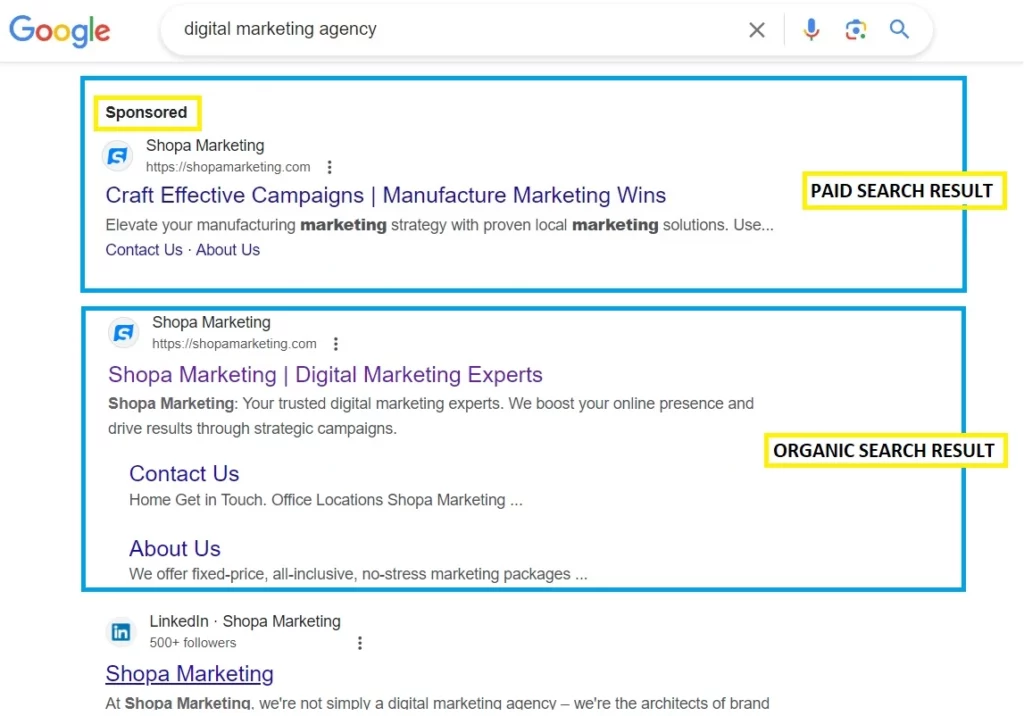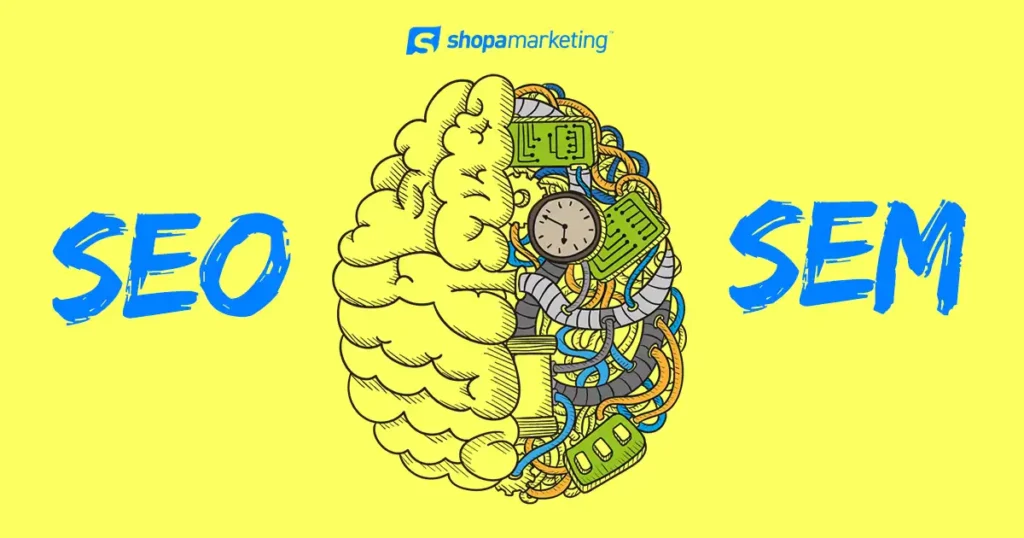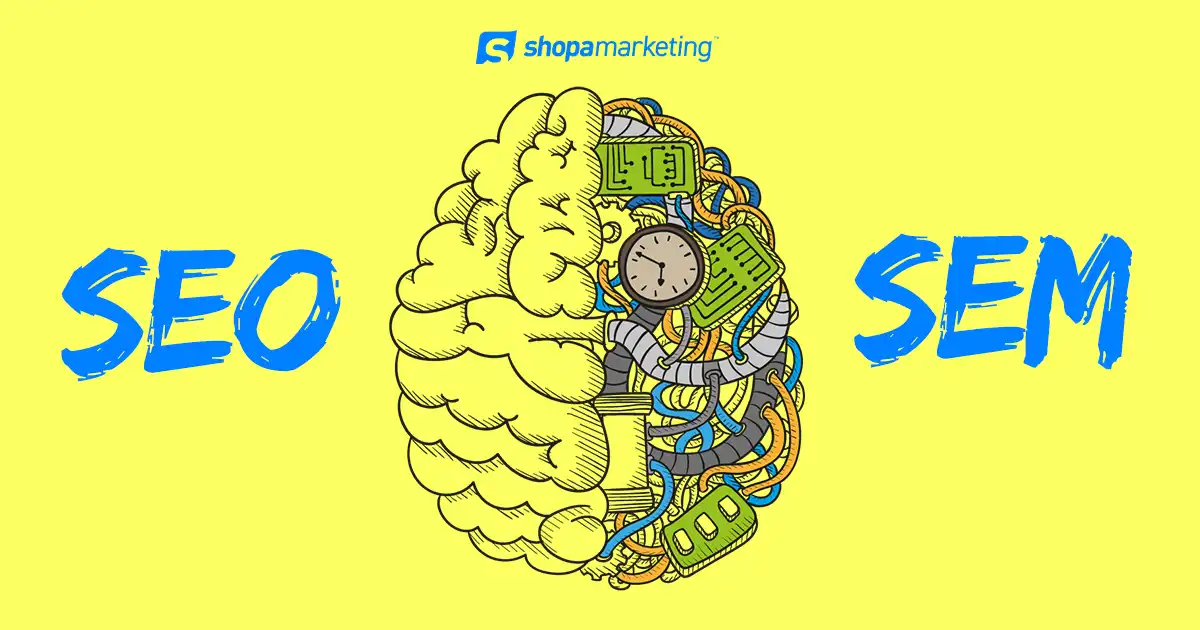Table of Contents
Welcome to the ultimate showdown: SEO vs SEM! If you’re a digital marketer or a business owner trying to improve your online presence, understanding the dynamic relationship between Search Engine Optimization (SEO) and Search Engine Marketing (SEM) is crucial. These two powerful strategies may seem like rivals on the surface, but in reality, they work hand in hand to elevate your website’s visibility, drive traffic, and boost conversions. So buckle up as we dive into this epic battle of SEO vs SEM and discover how these forces unite to unleash incredible results for your online success!
Introduction to SEO and SEM
SEO (Search Engine Optimization) and SEM (Search Engine Marketing) are two crucial components of digital marketing that work hand in hand to improve a website’s visibility on search engine result pages (SERPs). While both aim to increase traffic and attract potential customers, they use different strategies and techniques to achieve their goals.
SEO is the process of optimizing a website’s content, structure, and technical elements to rank higher on organic search results. It involves researching relevant keywords, creating high-quality content, improving website usability and user experience, building backlinks from reputable websites, and other tactics. The ultimate goal of SEO is to boost a website’s visibility organically without paying for ads.
On the other hand, SEM refers to paid advertising on search engines like Google or Bing. It includes various forms of online advertisements such as pay-per-click (PPC), display ads, retargeting campaigns, etc. Unlike SEO which takes time to show results, SEM provides immediate visibility by placing ads at the top of search engine result pages.
What is SEO?
Search Engine Optimization (SEO) is the practice of optimizing a website in order to improve its ranking and visibility on search engine results pages (SERPs). It involves using various techniques and strategies to make a website more attractive and relevant to search engines, ultimately leading to higher organic traffic.
The goal of SEO is to understand how search engines work and what users are searching for, in order to create high-quality content that meets those needs. This process includes both on-page optimization, such as keyword research, meta tags, and internal linking, as well as off-page optimization like link building and social media marketing.
Benefits of SEO for businesses
Search Engine Optimization (SEO) and Search Engine Marketing (SEM) are two essential strategies for improving the online presence of businesses. While both aim to increase website traffic and visibility, they work in different ways. In this section, we will discuss the benefits of SEO for businesses and how it can help them achieve their marketing goals.
1. Increased Website Traffic:
One of the key advantages of SEO lies in its capacity to generate organic traffic for a website. By employing effective optimization strategies like thorough keyword research, on-page optimization, and link building, businesses can enhance their search engine rankings and draw in a greater number of visitors to their site. Unlike paid advertising, which ceases to yield traffic once payments cease, SEO sustains a flow of organic traffic over time.
“70% of clicks go to the top 3 organic results.“
Source: Moz
2. Cost-Effective:
Compared to SEM or other forms of digital marketing, SEO is relatively cost-effective. It does not require a significant investment in tools or platforms; all you need is time and effort. By optimizing your website correctly, you can rank higher on search engine results pages without spending money on ads.
3. Better User Experience:
One crucial aspect of SEO is creating a positive user experience on your website. This includes having a fast loading speed, easy navigation, high-quality content, and mobile-friendliness factors that contribute to better user engagement and satisfaction. When users have a good experience on your site, they are more likely to stay longer and return in the future.
4. Highest Conversion Rates:
Studies have shown that websites with top rankings on search engines receive more clicks from users than those with lower rankings or paid advertisements. Therefore by implementing effective SEO techniques such as targeting relevant keywords and optimizing meta descriptions that encourage clicks can lead to higher conversion rates.
“SEO offers a higher return on investment (ROI) compared to SEM.“
Source: WordStream
“Organic leads convert 14.6% compared to 1.7% for paid leads.“
Source: Invespcro
5. Long-term Results:
Unlike SEM where results are immediate but short-lived unless you continue investing in it regularly – SEO provides long-term results even after you stop actively working on it due to its cumulative effect over time. This means that even if you take a break from SEO, your website will still rank high on search engines, resulting in continuous organic traffic.
SEO offers businesses multiple benefits such as increased website traffic, cost-effectiveness, improved user experience, higher conversion rates and long-term results. By incorporating SEO into their digital marketing strategy, businesses can establish a strong online presence and attract potential customers to their site.
What is SEM?
Search Engine Marketing (SEM) is a digital marketing approach focused on elevating website visibility within search engine results pages (SERPs) through paid advertising. It is frequently conflated with Search Engine Optimization (SEO), yet they represent two distinct methods for enhancing online presence.
SEM chiefly entails investing in advertisements on search engines like Google, Bing, and Yahoo. These ads typically appear at the top of search results and are typically denoted as “sponsored” or “ad.” The prevalent form of SEM is pay-per-click (PPC) advertising, wherein advertisers remit only when users click on their ad.

Benefits of SEM for businesses
“The global search engine marketing (SEM) market is expected to reach $382.2 billion by 2027.“
Source: Statista
Search engine marketing (SEM) has become an essential tool for businesses of all sizes in today’s digital landscape. It is a highly effective way to increase online visibility and drive targeted traffic to your website. In this section, we will delve deeper into the benefits of SEM for businesses.
1. Increased Brand Awareness:
One of the primary benefits of SEM is increased brand awareness. By targeting specific keywords related to your business, you can reach potential customers who are actively searching for products or services similar to what you offer. This exposure helps build brand recognition and credibility, making it more likely for users to choose your business over competitors.
2. Cost-Effective:
SEM allows businesses to set their own budget and only pay when someone clicks on their ad (pay-per-click or PPC). This means that you only pay for actual results, making it a cost-effective advertising method compared to traditional forms of marketing such as TV or print ads where you pay regardless of the impact on your target audience.
3. Targeted Advertising:
With SEM, you can specifically target users who are searching for particular keywords related to your business. This targeted approach ensures that your ad is seen by people who are most likely interested in what you have to offer, increasing the chances of conversions and ROI.
4. Quick Results:
Unlike search engine optimization (SEO), which takes time and effort before seeing significant results, SEM provides almost immediate results. Once your campaign is live, your ads will start appearing on search engine result pages (SERPs), driving traffic to your website within minutes.
5. Measurable Results:
Another advantage of SEM is its ability to provide measurable results through various analytics tools such as Google Analytics and AdWords conversion tracking. These tools allow businesses to track key metrics like impressions, clicks, conversions, and cost-per-click (CPC), providing valuable insights into the effectiveness of their campaigns.
6. Multiple Marketing Channels:
SEM offers multiple marketing channels, including search engines like Google and Bing, as well as social media platforms such as Facebook and LinkedIn. This allows businesses to reach a broader audience and target different types of customers through various channels.
7. Flexibility:
SEM campaigns are highly flexible, allowing businesses to adjust their ads in real-time based on their performance. This means you can continuously optimize your campaigns for better results by tweaking ad copies, keywords, and other elements to maximize your ROI.
SEM offers numerous benefits for businesses seeking to improve their online presence and attract more customers. Its targeted approach, cost-effectiveness, quick results, measurability, flexibility, and multiple marketing channels make it an essential component of any digital marketing strategy alongside SEO.
SEO vs SEM: A Comparative Analysis

Let’s break down the differences between SEO and SEM to help SMEs make informed decisions about their digital marketing strategies.
| Feature | SEM | SEO |
| Focus | Increase visibility and drive traffic through paid and organic search | Increase visibility and drive traffic through organic search |
| Cost | Requires budget for paid advertising (PPC) | Can be done for free, but often requires investment in time and resources |
| Results speed | Faster (ads appear immediately) | Slower (months or years to see significant results) |
| Traffic type | Paid | Organic |
| Targeting | Specific keywords, demographics, and interests | Specific keywords (limited targeting capabilities) |
| Ranking | Paid ads appear above organic results | No guaranteed ranking, aims for top positions |
| Competition | High in popular keywords | Varies depending on keyword difficulty |
| Long-term benefits | No guaranteed ranking aims for top positions | Can have lasting benefits with ongoing effort |
| Examples | Google Ads, Bing Ads, PPC campaigns | May not last if the budget stops |
| Metrics | Clicks, impressions, conversions, CPC, CTR, and ROI | Organic traffic, rankings, bounce rate, time on site, conversions |
| Platforms | Google Ads, Bing Ads, Yahoo, and social media ad platforms | N/A (though specific tools can assist with SEO) |
| Industry considerations | It varies depending on the industry – some benefit more from paid ads, others from organic reach | It varies depending on the industry – some benefit more from paid ads, others from organic reach |
| Technical SEO | Blog articles, website optimization, and link-building | Paid ads are not directly impacted by technical SEO, but landing pages should be optimized |
| Content | Ads require compelling ad copy and landing pages | SEO benefits from high-quality, relevant content that targets user intent |
| Link building | Not directly applicable to paid ads | Backlinks from other websites are a major ranking factor for SEO |
| Local SEO | Paid search offers specific options for local targeting | Local SEO optimization techniques can improve organic visibility in local searches |
How do SEO and SEM work together?
“Combining SEO and SEM allows you to target users across different stages of the buyer’s journey.“
Source: HubSpot
While SEO and SEM may seem like competing strategies for driving traffic, they actually complement each other in many ways. Here are some reasons why:
1. Shared Keyword Research:
Both SEO and SEM rely heavily on keyword research to target specific audiences. By coordinating keyword research efforts between these two strategies, businesses can gain insights into which keywords drive the most traffic and conversions.
2. Increased Visibility:
Combining organic ranking through SEO with paid placement through SEM can significantly increase a business’ online presence. While being visible through organic search results builds credibility for a brand, paid advertising allows them to reach out to potential customers who may not be aware of their brand yet.
3. Data Sharing:
Running an effective SEO or SEM campaign requires constant monitoring and analysis of data such as click-through rates (CTR), conversion rates (CVR), bounce rates, etc. By sharing data between SEO and SEM efforts, businesses can gain a deeper understanding of their target audience and adjust their strategies accordingly.
4. Cost Efficiency:
While SEM requires a budget for ad placements, optimizing a website through SEO is relatively cost-effective in the long run. By combining both strategies, businesses can allocate resources more efficiently and achieve better results.
While SEO and SEM are two distinct approaches to driving traffic to a website, they work best when integrated together. Businesses should aim to strike a balance between both strategies for maximum impact on their online presence.
“75% of marketers believe using both SEO and SEM delivers better results.“
Source: Search Engine Journal
Shopa Marketing’s Approach: All-Inclusive Solutions
Shopa Marketing recognizes that each SME is unique and requires a tailored approach to digital marketing. By offering all-inclusive packages with no hidden costs or additional fees, the agency ensures that clients can embark on their digital journey with peace of mind. The dedication to understanding SMEs is evident in providing each client with a dedicated account manager, making communication seamless and addressing queries promptly. Contact us today online or by phone at +1 844 223 0051 to begin planning your SEO or SEM campaign!







